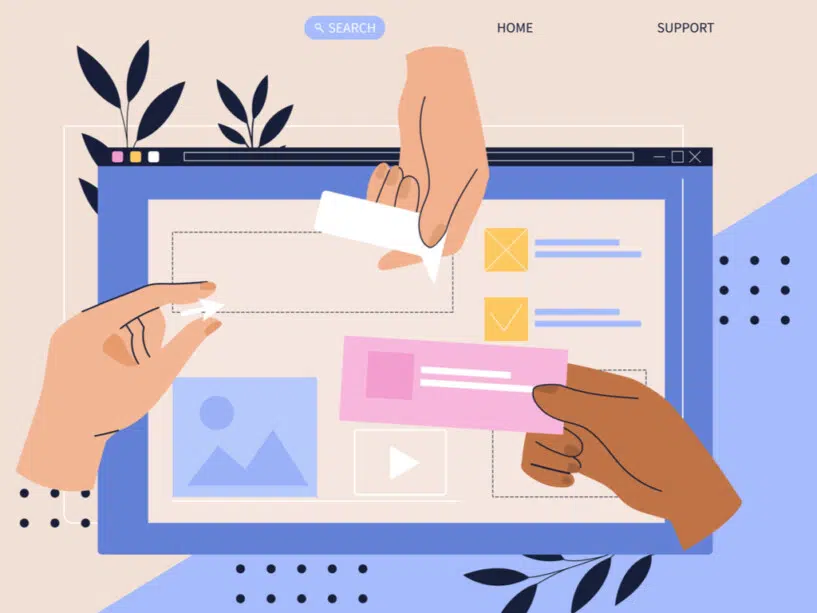4 Signs Your Website Needs a Redesign

When was the last time you redesigned your website? Or the last time you checked your site’s search ranking? How recently did you conduct a keyword analysis? Even if the answer to these questions is recently, did it improve your site’s performance and your visitors’ experiences?
Today’s consumers expect high-quality digital experiences. According to research by Forrester, improving your sites user interface can boost conversion rates by 200%, and improving user experience design can have an ever greater impact at 400% higher conversion.
We live in a digital age, and every organization needs a robust, effective website. An effective website isn’t just one with the flashiest animation or boldest colors. It combines usability and utility for your visitors.
Here are four signs that a redesign is in order.
[buzzsprout episode=’10036924′ player=’true’]
1. Your website isn’t mobile-friendly.
Having a website that isn’t optimized for mobile devices might be the single greatest web design sin right now. Mobile devices drove 61% of site visits in the U.S. last year, with that number jumping to 68.1% of all web traffic in the rest of the world, according to a Perficient report based on Google Analytics.
So what makes a site mobile friendly? For starters, users must be able to navigate the site quickly and easily from small devices. For instance, sites that aren’t mobile-friendly might have navigation buttons that are difficult to press. Other factors to consider include:
- Text is big enough to be legible on a small device.
- Pop-ups are not intrusive or difficult to close.
- Content is concise and does not overwhelm the audience.
- Navigation menus are broken into different sections.
2. The site loads too slowly.
Three seconds—that’s how quickly you can lose a website visitor if your site takes too long to load.
According to Google research, 53% of mobile website visitors will leave a site if it takes more than a few seconds to load.
The cause for slow load times can be multifaceted: poorly developed code, image files that are too big, too many plugins—all contribute to the kind of delays that cause people to bail on your site.
Addressing such issues can be a boon to the bottom line: Decreasing mobile site load times by just one-tenth of a second can result in up to a 10% increase in conversion rates, according to research by Deloitte.
3. The site is outdated or has obvious aesthetic problems.
One of the biggest signs that a site is outdated is the use of Flash. This Adobe-owned technology was popular in the early stages of the internet. But the technology was often buggy, didn’t work on Apple mobile devices and contained a host of security issues. Adobe jettisoned Flash earlier this year, but not all organizations have rid their sites of it.
Other problematic features and content that could be bogging down your site include:
- Inability to incorporate new web features and plug-ins
- Inability to upgrade to the most current cybersecurity patches
- Content that is outdated (Check out our post on how to repurpose old content)
- Broken or dead links (e.g. 404s)
Aesthetically, organizations need to ask:
- Is my site hard to navigate?
- Is visibility difficult because of a poor color scheme?
Remember, users make decisions about sites in a matter of seconds—sometimes less. If any issue seems slightly off, users could flee to a site that looks and functions better.
4. There’s been an organizational change, and the site doesn’t reflect the organization.
As an organization changes, so should its website. Part of those considerations include updating the website to match any brand updates, staff changes, new product or service offerings and new content programs; synergy and consistency are key across marketing efforts.
Organizational changes can include any tweaks to back-end items, too. If organizations adopt new customer relationship management (CRM) or association management systems (AMS), the website needs to work with those new products.
Let’s say an association has chosen to update its AMS to offer easier logins for members and greater content behind a paywall. That AMS has to work well with the existing website. If the two don’t blend, that could require a lot of development customization to make sure everything looks OK on the front end. Ultimately, in such situations, a website redesign might be the better move.

